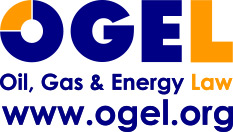Editorial, Volume V, issue #01 - March 2007 - Electricity Interconnectors
Article from: OGEL 1 (2007), in Editorial
Introduction
An electric interconnector may be defined as a high-voltage overhead line or undersea cable, and related equipment, used to connect the transmission networks of two countries or to connect the networks of two provinces or states that have separate power systems. In many parts of the world, investment in electric interconnectors will be needed over the next twenty years. Without electric interconnectors, electricity trade would not be possible.
This is the second special issue of OGEL dealing with electric interconnectors. The first special issue (Volume 4, issue #2, August 2006) had the same editorial team.
The articles in this issue may be grouped under three different headings:
- Regulation of interconnectors within the European Union
- Security of Supply and Reciprocity
- Market design in relation to interconnectors.
Although the majority of the articles have an "EU focus," the key policy issues and investment questions are also associated with interconnectors outside the EU. We would welcome future OGEL articles covering interconnectors in Asia, Africa, Latin America, and the rest of the world.
Regulation of interconnectors within the European Union
Under this heading we have three articles which address policy issues at the broadest or most theoretical level and two articles focused on a practical and specific level.
At the broadest policy level, we note that the "European Council Action Plan (2007-2009): Energy Policy for Europe" issued on 9 March 2007 states that there is a need for "the establishment of an independent mechanism for national regulators to cooperate and take decisions on important cross-border issues" and a need for "the creation of a new Community mechanism for Transmission System Operators to improve coordination of network operation and grid security building on existing cooperation practices." These rather modest steps were overshadowed by the Council's endorsement of "EU objective of a 30% reduction in greenhouse gas emissions by 2020 compared to 1990." However, there remain some difficult and challenging questions of how to create incentives to build interconnectors and how to regulate interconnectors within the framework of EU law and national law. These questions are addressed by the following articles:
- Regulation of Electricity Markets at the EU Level, by Charles F. Zimmermann and Kim Talus
- Interconnecting the internal electricity market - a goal without a plan?, by Henrik Bjornebye
- Monopolies in EC Energy Law - Interconnectors, by Kim Talus
Following the VEFW case (which was analyzed in an article in OGEL Volume 4, issue #2, August 2006) many TSOs banned all priority rights to interconnector capacity. The case had an important effect on the allocation of interconnector capacity, and generally resulted in "freeing up" transfer capacity to the market. We have one article describing the effect of the case on Italian policy concerning interconnector capacity allocation.
- Italian Rules on Interconnection Capacity Allocation - Before and After the "VEMW" Case, by Zuzanna Brocka-Balbi and Matteo Barra
Finally, we have included in this issue a regulatory document which is not a journal article but nevertheless illustrates the questions that arise when national law is used to implement EU-level policy objectives, in the absence of an EU-level regulatory authority.
- Application for EU Exemption (June 2006) submitted by BritNed Development Ltd
Security of Supply and Reciprocity
Throughout the world, security of supply of electricity is a policy issue confronted by countries which depend on electricity imports or participate in regional electricity markets which make countries mutually dependent on each other. TSOs and organizations responsible for security of supply therefore face a question whether interconnectors will result in a net improvement in long-term security of electricity supply. Surprisingly, given the amount of careful attention devoted to operational (short-term) security of supply, we do not have a standard approach to the analysis of long-term security of supply. This point is examined in the following article.
- Do Electric Interconnectors Improve Long-Term Security of Electricity Supply?, by Charles F. Zimmermann
Moreover, there are many examples of neighbor countries in which the electricity market is liberalized in Country A but not in Country B and therefore the competent ministries or energy regulatory authorities must decide whether interconnection capacity should be built at all. A very interesting case is electricity trade between Finland and Russia. We have an article analyzing the Finnish government's decision with regard to a proposed interconnector.
- Proposed Finland-Russia Interconnector Rejected, by Vesa A. Lappalainen
Market design in relation to interconnectors
In many parts of the world, there are opportunities to connect a country or region with high electricity prices and high generation costs, to a country or region with low prices and low generation costs. In addition there are opportunities to arbitrage the electricity price levels among countries or regions on an hourly, daily, or monthly basis even when the long-term average level of prices is expected to be almost the same. The decision whether to invest in a new interconnector requires an agreement on who should be the owners of the project, and how the owners will recover their investment through some form of sharing of benefits or pricing of access to capacity. We have one article and one PowerPoint presentation addressing these questions.
- GCC Power Grid: Transforming the GCC Power Sector into a Major Energy Trading Market, by Hassan K. Al-Asaad, Adnan I. Al-Mohaisen, and Satish Sud
- Alternative Pricing Strategies for Interconnectors, by Charles F. Zimmermann
Gulf Cooperation Council Interconnection Authority was established with responsibility for the construction, operation and maintenance of the electrical interconnection linking the power systems of the GCC countries. Today the Authority is responsible for a large scale interconnector project linking the energy markets of the United Arab Emirates, Bahrain, Saudi Arabia, Oman, Qatar, and Kuwait. In the Gulf as in Europe, interconnectors play an important role in integrating national energy markets. The rationale behind these investments is market integration enhancing conditions for competition and security of supply. While the first objective, more competition, can be attained thorough increasing cross-border transmission capacity, the effect of interconnectors on security of supply is more circumstantial and the effect of an interconnector may also prove to be negative.
To supplement this collection of articles, we have also prepared a guide to relevant and useful documents that are available on the Internet.
As editors to the first and this second OGEL special on interconnectors, we would like to thank all the contributors for their high quality work and the effort they have made to help us put together two different and very topical OGEL issues covering electricity interconnectors.
Kim Talus and Charles Zimmermann
***
This is the second special issue of OGEL dealing with electric interconnectors. While the first special issue (Volume 4, issue #2, August 2006) focused primarily on EU regulation in this area, this second issue has opted for a broader approach.


